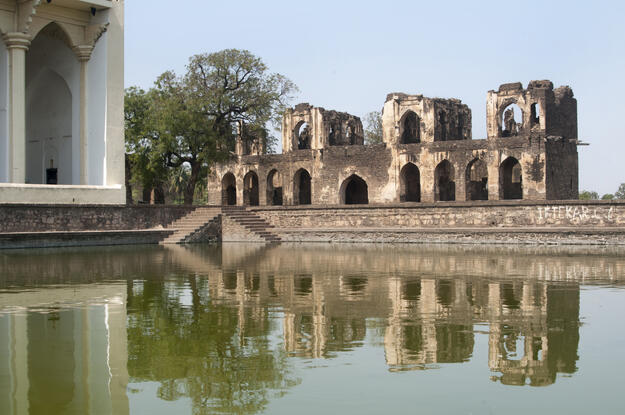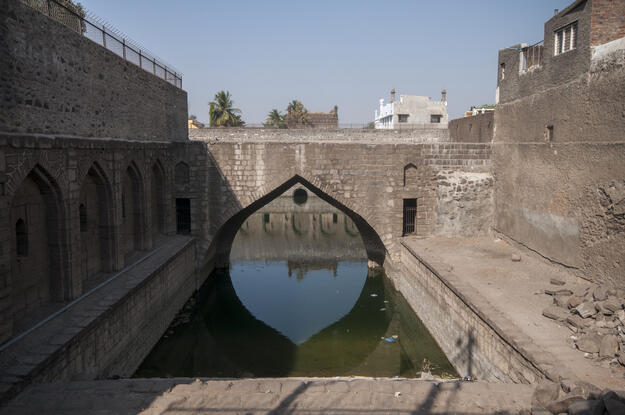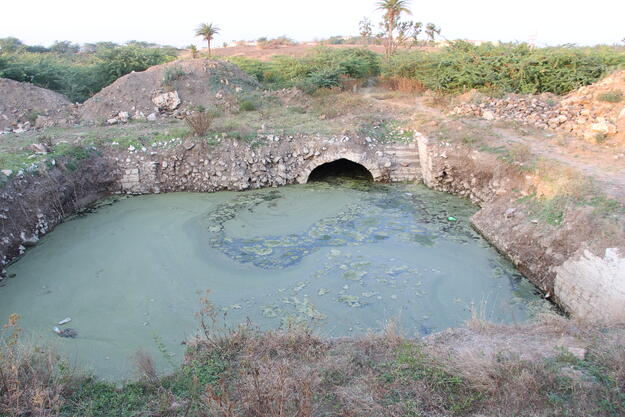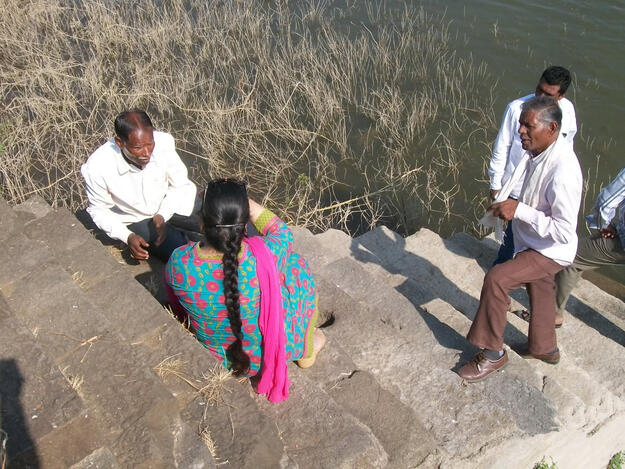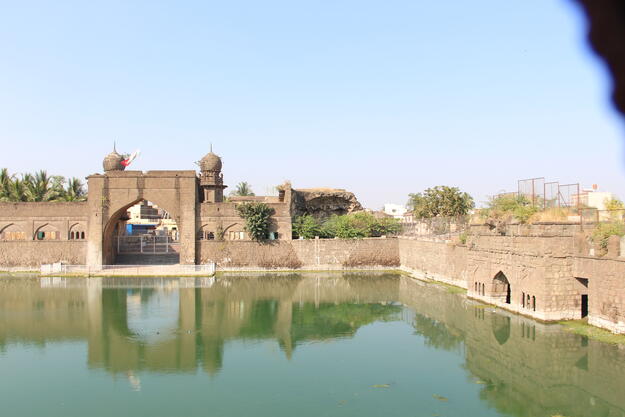Historic Water Systems of the Deccan Plateau
Site History and Significance
Water Collection in India
For the cultures that flourished on the Indian subcontinent, the need to store and manage water arose from the seasonal monsoon, which delivers more than three quarters of India’s total annual rainfall over a period of several months. Fortunately, the rich climatic and geological diversity of the subcontinent gave rise to a broad array of systems and techniques that allow water to be conserved for the dry season.
If water cannot be collected from the surface, groundwater provides an alternative source, if it can be harnessed. In much of Asia and North Africa, underground tunnels, directly inspired by Persian qanats, were used to achieve this. In this ingenious system, a gently sloping underground tunnel allows groundwater from a large area to flow to a single outlet, where it can be collected. A large well is placed at the origin of the tunnel, while narrower vertical shafts, dug for ventilation, help mark its route overground.
The Benefits of Traditional Systems
But traditional water management systems depend on collective responsibility for their maintenance and upkeep. Silt accumulates gradually and must be constantly removed, while ventilation shafts and other outlets must be protected from encroachment that can contaminate the water supply. When these collective systems fail, private and unregulated extraction takes their place, as is the case in much of India today. By contrast, traditional systems limit the supply of water to the natural rate at which it replenishes, making them sustainable in the long run.
Our Involvement
2020 World Monuments Watch
The reactivation of historic water systems and the updating of traditional practices can help mitigate the challenges of the looming global water crisis, and can contribute to changing our water consciousness by promoting a new ethic of care. Inclusion of the historic water systems of the Deccan Plateau on the 2020 World Monuments Watch is a call for tapping into the potential for these water systems to address the water crisis for contemporary communities.
Among the sites featured on the 2020 Watch are the historic water systems in Daulatabad, a historic fort in the Marathwada region of the Deccan, and Bijapur, a vibrant city and cultural center during the reign of Ibrahim Adil Shah II (r. 1580–1627). World Monuments Fund’s (WMF) restoration of the Taj Bawdi water system in Bijapur will not only address the building fabric, but the water resource itself as a pilot project that demonstrates the potential of recovering the much larger water system of the city.
Learn More
World Monuments Fund safeguards cultural heritage around the globe, ensuring our treasured places are preserved for present and future generations.
Sign up for our newsletter to receive regular updates on our projects, stories from the field, upcoming events, and more!
![]()
This project has been supported, in part, by Tianaderrah Foundation.

